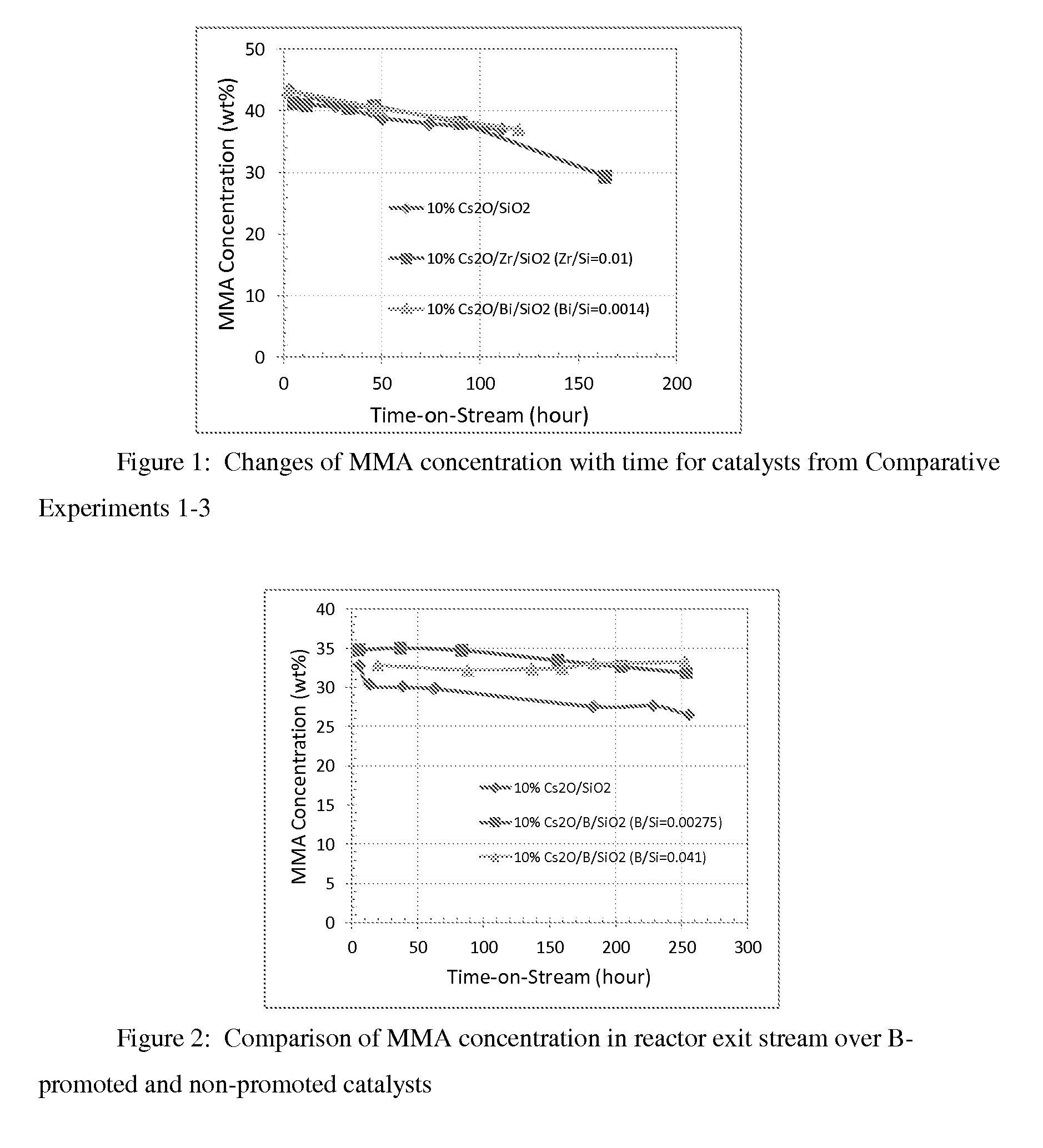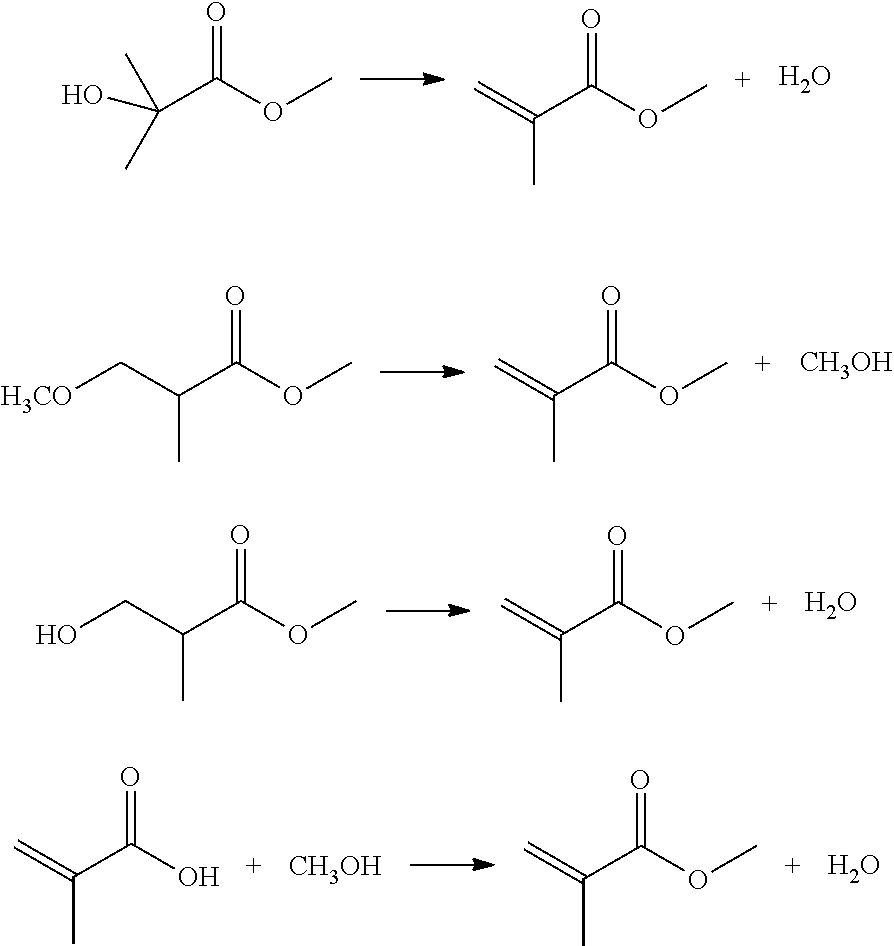Process for production of methacrylic acid esters
a technology of methacrylic acid and esters, which is applied in the direction of catalyst activation/preparation, physical/chemical process catalysts, metal/metal-oxides/metal-hydroxide catalysts, etc., can solve the problem of high reaction temperature, inability to tolerate high-temperature reaction, and inability to deactivate quickly by coke deposition, so as to improve the stability of catalysts
- Summary
- Abstract
- Description
- Claims
- Application Information
AI Technical Summary
Benefits of technology
Problems solved by technology
Method used
Image
Examples
example 4
Preparation of 10% Cs2O / B / SiO2 (B / Si=0.00275) Catalyst
[0076]An aqueous solution is prepared by dissolving 0.043 g of boric acid in 50 g of deionized water. Then, 2.27 g of cesium acetate is added and dissolved into the solution. The resulting solution is then added into a round bottom flask containing 15 g silica gel (Davisil® Grade 636 from Aldrich). The mixture is stirred for 10 minutes, followed by rotary evaporation at 50° C. under vacuum to remove the water and is further dried in a vacuum oven at room temperature overnight. The powder is further dried at 120° C. for 5 hours and calcined at 450° C. for 5 hours in a box furnace under an air atmosphere. It is then pressed and sieved into 14-20 mesh size particles and designated 10% Cs2O / B / SiO2 (B / Si=0.00275), with a nominal atomic ratio of B / Si of 0.00275.
example 5
Preparation of 10% Cs2O / B / SiO2 (B / Si=0.041) Catalyst
[0077]An aqueous solution is prepared by dissolving 0.64 g of boric acid and 2.27 g of cesium acetate in 100 g of deionized water. This solution is added to a round bottom flask containing 15 g silica gel (Davisil® Grade 636 from Aldrich). The mixture is stirred for 10 minutes, followed by rotary evaporation at 50° C. under vacuum to remove the water and the resulting powder is dried in a vacuum oven at room temperature overnight. The powder is further dried at 120° C. for 5 hours and calcined at 450° C. for 5 hours in a box furnace under an air atmosphere. It is then pressed and sieved into 14-20 mesh size particles and designated 10% Cs2O / B / SiO2 (B / Si=0.041), with a 0.041 B / Si nominal atomic ratio.
Catalyst Evaluation
[0078]Catalyst, in the form of 14-20 mesh particles, is loaded into the middle of a ½″ O.D. stainless steel plug flow tubular reactor with silicon carbide inert particles loaded above and below the catalyst charge. Th...
PUM
| Property | Measurement | Unit |
|---|---|---|
| pore size | aaaaa | aaaaa |
| weight percent | aaaaa | aaaaa |
| weight percent | aaaaa | aaaaa |
Abstract
Description
Claims
Application Information
 Login to View More
Login to View More - R&D
- Intellectual Property
- Life Sciences
- Materials
- Tech Scout
- Unparalleled Data Quality
- Higher Quality Content
- 60% Fewer Hallucinations
Browse by: Latest US Patents, China's latest patents, Technical Efficacy Thesaurus, Application Domain, Technology Topic, Popular Technical Reports.
© 2025 PatSnap. All rights reserved.Legal|Privacy policy|Modern Slavery Act Transparency Statement|Sitemap|About US| Contact US: help@patsnap.com


